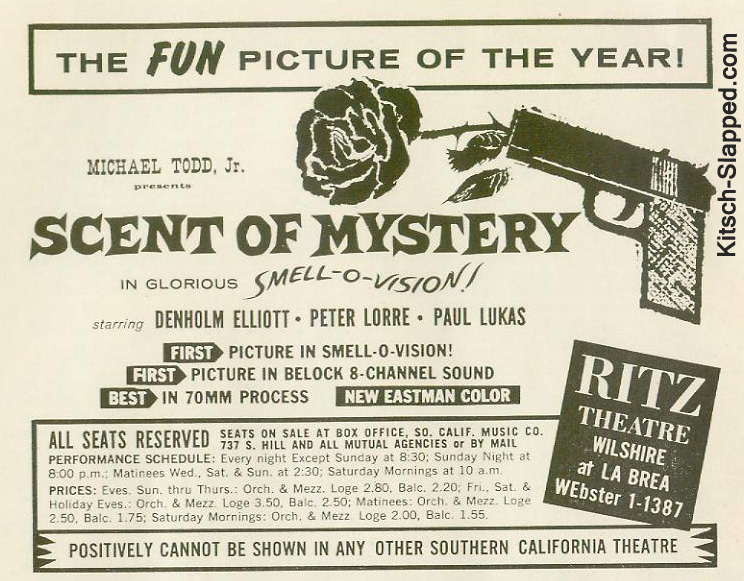What is Digital Scent Technology
Imagine how incredible it would be if you could experience the perception of smell during your favorite movie scenes. The addition of this visceral dimension would add so much more depth to a scene. Almost every aspect of a movie-watching experience can be enhanced just by the addition of smell. It would not only intensify our emotions but give the drama a heightened sense of reality. As such, it can be explained as the numerous and varying attempts of movie theaters and producers to provide an enriched experience of watching movies – by releasing scents/aromas related to what they are viewing on the screen. Different movie theaters and movie producers have tried many methods to reproduce the smell of what is being displayed on the screen. Out of these, Smell-O-Vision gained distinction as it worked for some. Note that it worked “only for some”. It was a failure but when talking of digital scent technology, it becomes necessary to explain what Smell-O-Vision is.
What is Smell-O-Vision?
It was a system designed to release odor so that the viewers could smell what they were visually experiencing on the screen. The appropriate smell was released, in a timely and controlled manner, by pipes connected to individual seats in theaters. Unfortunately, the system did not work as anticipated. The audience complained that the release of the odor was accompanied by a distracting hissing noise. Also, there was a significant time mismatch between the scene on the screen and the aroma being experienced. In some parts of the theater, the smell was too faint to be recognized.
Working On Digital Scent Technology: Current Hurdles
A question arises here that even after forty years since we put a man on the moon, why does the ability to reproduce odor effectively in movie theaters still elude us? One of the major reasons for this being that compared to the other senses, the sense of smell is not as well understood. We perceive smell in the same way we perceive any other sense; odor is detected by distinct sensory cells which predominantly reside in a cavity at the back of your nose. A message is triggered to the brain as soon as these cells detect molecules of an odor. Unfortunately, we still do not have a clear picture of how the sensory cells perceive a smell and how does the brain differentiates between different odors. This severely restricts our ability to build a technology that can effectively reproduce odor. There are other challenges that seem mundane but are tricky nonetheless when it comes to introducing fragrance in movie theatres. For instance, how do you ensure that the odor is uniformly spread across the theatre in a significant amount so as to be noticed by all the viewers at the same time? It also needs to be ensured that the time at which an odor reaches a viewer exactly coincides with the scene being shown on the screen and additionally the smell should quickly dissipate to make way for the next odor.
Research On Digital Scent Technology – Can It Work?
A lot of companies are working on digital scent technology. This will allow us to digitally sense, transmit and reproduce smell. A notable example is “The Scent Dome” which is being tested by a UK-based internet service provider called Telewest Broadband. The device is about the size of a teapot and can reproduce around sixty distinct smells by releasing particles from its twenty liquid-filled odor capsules. Computers using this device will be equipped by software to recognize odor-identifying codes embedded in a digital file that can be transmitted via the internet. Digital smell technology can immensely influence the future of a plethora of industries including but not limited to movies, marketing, education, games, and music – if only we build it right. The only problems are those listed under challenges in the above sections. Once researchers are able to provide instant, uniform transfer and fast dissipation of smell, the digital scent technology might work better. That, in turn, may mean some reconstruction in theaters as well. Assisted By & With Inputs From Swagat Karnany.
